
Image Processing with CUDA
.pdf2.3CUDA Programming Model
CUDA programming is a type of heterogeneous programming that involves running code on two di erent platforms: a host and a device. The host system consists primarily of the CPU, main memory and its supporting architecture. The device is generally the video card consisting of a CUDA-enabled GPU and its supporting architecture.
The source code for a CUDA program consists of both the host and device code mixed in the same le. Because the source code targets two di erent processing architectures, additional steps are required in the compilation process. The NVidia C Compiler (NVCC) rst parses the source code and creates two separate les: one to be executed by the host and one for the device. The host le is compiled with a standard C/C++ compiler which produces standard CPU object les. The devicele is compiled with the CUDA C Compiler (CUDACC) which produces CUDA object les. These object les are in an assembly language known as Parallel Thread eXecution or PTX les. PTX les are recognized by device drivers that are installed with NVidia graphics cards. The two resultingle set is linked and a CPU-GPU executable is created (Figure 2.6)[28]. As shown in Figure 2.7[28] & 2.8[29], this type of architecture allows the exibility for developers who are familiar with other languages to leverage the power of CUDA without having to learn a brand new language.
11
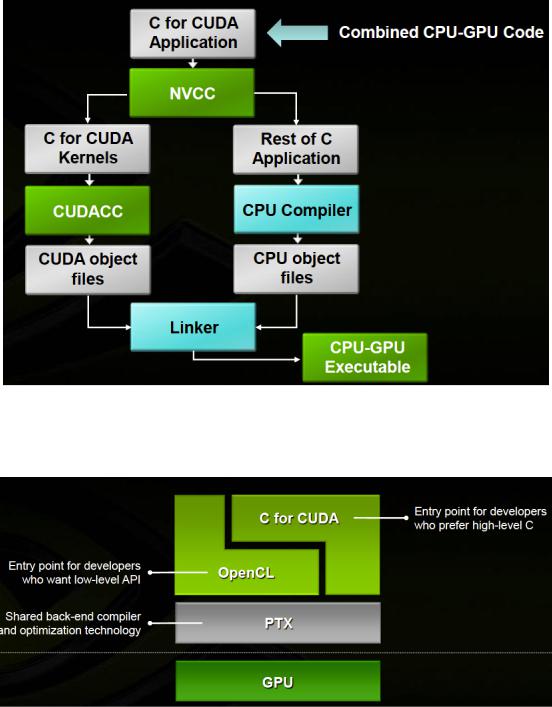
Figure 2.6: The compilation process for source le with host & device code
Figure 2.7: CUDA architecture
12
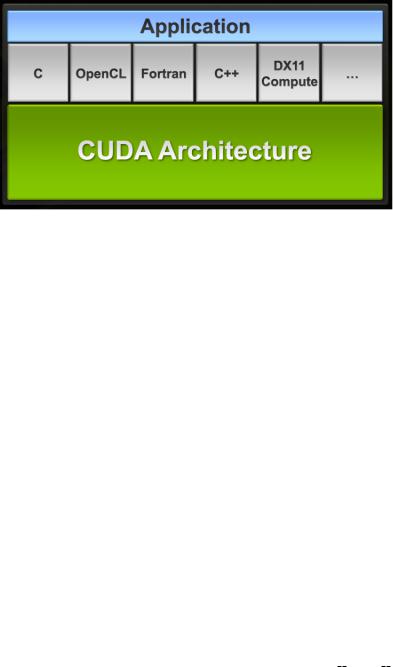
Figure 2.8: CUDA architecture
NVCC separates host from device code by identifying speci c keywords that represents instructions for the device. Methods/Functions that are designed to execute on the device are called kernels. Kernels are typically executed by thousands to millions of threads to take advantage of data parallelism. Since all threads are executing the same code, this falls into the well known paradigm of Single Program Multiple Data (SPMD) widely used in parallel computing systems[30]. SPMD is an asynchronous version of another technique known as Single-Instruction Multiple-Data (SIMD). In SIMD, multiple processors execute the same program instructions (a function) on di erent data. The key di erence between SIMD and SPMD is that SIMD executes the program instructions in locksteps. Every processor executes the identical instruction at any given time. SPMD however removes that restriction. This allows the possibility of having branching in the program instruction where the instructions executed by each processor is not always the same.
Listing 2.1 shows an example of a typical C program involving CUDA. global is a C extension that de nes a kernel. The kernel is invoked inside the main function by using the <<< ... >>>
syntax. dimblock and dimGrid de nes the number of threads and its con guration when it executes in the kernel. Each thread that executes the kernel is assigned a unique thread id. A particular thread within the kernel can be identi ed by the combination of its blockIdx, blockDim and threadIdx.
13
|
This allows for the control of having di erent threads do di erent work. |
|
||||
|
|
|
||||
|
Listing 2.1: Sample source code with Host & Device code |
|
||||
1 |
|
|
|
|
|
|
// Kernel Definition |
|
|
|
|
||
2 |
__global__ |
void MatAdd ( float A[N ][ N], |
float B[N ][ N], |
float C[N ][ N ]) |
||
|
{ |
|
|
|
|
|
3 |
int i = blockIdx .x * blockDim .x + threadIdx .x; |
|
||||
4 |
int j = |
blockIdx .y * blockDim .y |
+ |
threadIdx .y; |
|
|
5 |
|
|
|
|
|
|
6 |
if (i < N && j < N) { |
|
|
|
|
|
7 |
C[i ][ j] = A[i ][ j] + B[i ][ j ]; |
|
|
|
|
|
8 |
} |
|
|
|
|
|
9 |
} |
|
|
|
|
|
10 |
|
|
|
|
|
|
11 |
int main () |
{ |
|
|
|
|
12 |
// Kernel Invocation |
|
|
|
|
|
13 |
dim3 dimBlock (16 , 16) ; |
|
|
|
|
|
14 |
dim3 dimGrid (( N + dimBlock .x - 1) |
/ |
dimBlock .x , (N |
+ dimBlock .y - |
||
|
1) |
/ dimBlock .y); |
|
|
|
|
15 |
|
|
|
|
|
|
16 |
MatAdd |
<<< dimGrid , dimBlock >>> |
(A , |
B , C); |
|
|
17 |
} |
|
|
|
|
|
A CUDA program starts execution on the the host (Figure 2.9)[31]. When it encounters the kernel, it will launch the kernel and continues execution on the CPU without waiting for the completion of the kernel. The groups of threads created as a result of the kernel invocation is collectively referred to as a grid. The grid terminates when the kernel terminates. Currently in CUDA, only one kernel can be executed at a time. If the host encounters another kernel while a previous kernel is not yet complete, the CPU will stall until the kernel is complete. The next-generation architecture
FERMI allows for the concurrent execution of multiple kernels.
14

Figure 2.9: Execution of a CUDA program
|
In CUDA, the host and devices have separate memory spaces. Variables and data in the host |
|||||
|
memory is not directly accessible by the GPU. The data allocated on the host must rst be trans- |
|||||
|
fered to the device memory using the CUDA API. Similarly, the results from the device must be |
|||||
|
transferred back to the host. Memory management techniques must be applied on both platforms. |
|||||
|
Listing 2.2[31] shows a snippet of operations dealing with memory on the host and device. cudaMal- |
|||||
|
loc, cudaMemcpy, cudaFree are all CUDA APIs that allocates memory, copies memory, and frees |
|||||
|
memory respectively on the device. |
|
||||
|
|
|||||
|
Listing 2.2: Memory operations in a CUDA program |
|||||
1 |
|
|
||||
void MatrixMulOnDevice ( float * |
M , float * N , float * P , int Width ) { |
|||||
2 |
int |
size = |
Width |
* |
Width * |
sizeof ( float ); |
3 |
|
|
|
|
|
|
4 |
// 1. |
Load |
M and |
N |
to device memory |
|
5cudaMalloc (Md , size );
6 cudaMemcpy (Md , M , size , cudaMemcpyHostToDevice );
7cudaMalloc (Nd , size );
8 |
cudaMemcpy (Nd , |
N , size , cudaMemcpyHostToDevice ); |
9 |
|
|
10 |
// Allocate P on |
the device |
11 |
cudaMalloc (Pd , |
size ); |
12 |
|
|
15
13// 2. Kernel invocation code here
14// ...
15 |
|
|
|
16 |
// 3. |
Read P |
from the device |
17 |
cudaMemcpy (P , |
Pd , size , cudaMemcpyDeviceToHost ); |
|
18 |
// Free |
device |
matrices |
19cudaFree ( Md );
20cudaFree ( Nd );
21cudaFree ( Pd );
22}
2.4CUDA Thread Hierarchy
Threads on the device are automatically invoked when a kernel is being executed. The programmer
determines the number of threads that best suits the given problem. The thread count along with
the thread con gurations are passed into the kernel. The entire collection of threads responsible for
an execution of the kernel is called a grid (Figure 2.10)[4].
16
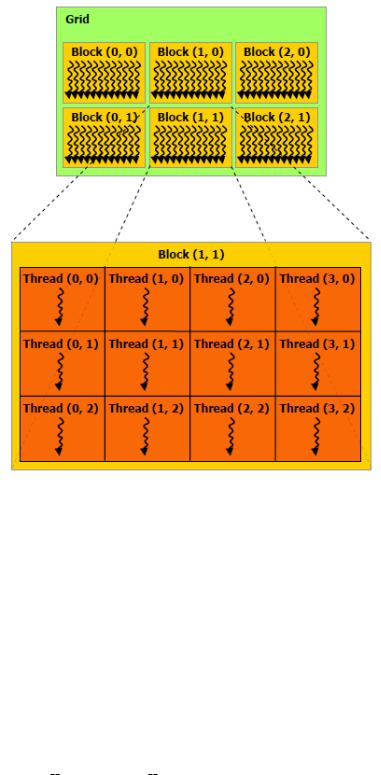
Figure 2.10: Grid of thread blocks
A grid is further partitioned and can consist of one or more thread blocks. A block is an array of concurrent threads that execute the same thread program and can cooperate in achieving a result. In Figure 2.10[4], the blocks are organized into a 2 x 3 array. A thread block can be partitioned into one, two or three dimensions, facilitating calculations dealing with vectors, matrices or elds. Each block has its own unique block identi er. All threads within a block can cooperate with each other. They can share data by reading and writing to shared memory, and they can synchronize their execution by using syncthreads(). syncthreads acts as a barrier so that all threads of the same block must wait for all threads to execute before moving forward. This ensures that all threads
17

have nished executing a phase of their execution in the kernel before moving on to the next phase. synchthread is commonly used inside the kernel to coordinate read and write phases to shared
memory. Since the data in the memory is shared, all threads must write rst and read second. Threads of di erent blocks cannot communicate with each other. In fact, thread blocks are
required that they can be executed independently of other blocks, whether in series or in parallel. Like blocks, threads within a block can be strategically structured as well. Figure 2.10 shows a 3 x 4 array of threads within block (1,1). All blocks must contain the same number of threads and thread structure. Each block can have a maximum of up to 512 threads. The programmer has the freedom to structure the threads in any di erent combinations of up to three dimensions (512 x 1, 16 x 8 x 2, etc) as long as the total number of threads do not exceed 512. The organization of blocks and threads can be established and passed to the kernel when it is invoked by the host. this con guration is maintained throughout the entire execution of the kernel.
Block and grid dimensions can be initialized by the to type dim3, which is a essentially a struct with x, y, z elds. Listing 2.3 creates a 2 x 2 x 1 grid and each block has a dimension of 4 x 2 x 2. The threading con guration is then passed to the kernel. The resulting hierarchy can be graphically represented as shown in Figure 2.11[31]. Within the kernel, these information are stored as built-in variables. blockDim holds the dimension information of the current block. blockIdx and threadIdx provides the current block and thread index information. All blockIdx, threadIdx, gridDim, and blockDim have 3 dimensions: x, y, z. For example, block (1,1) has blockIdx.x = 1 and blockIdx.y = 1.
Listing 2.3: Invoking a kernel with a 2 x 2 x 1 grid and a 4 x 2 x 2 block
1 |
dim3 |
dimBlock (4 ,2 ,2) ; |
2 |
dim3 |
dimGrid (2 ,2 ,1) ; |
3 |
KernelFunction <<< dimGrid , dimBlock >>> |
|
18
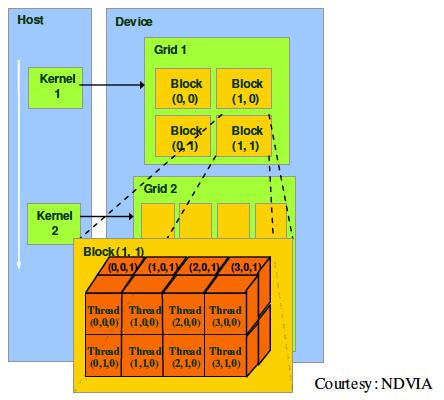
Figure 2.11: A grid with dimension (2,2,1) and a block with dimension (4,2,2)
|
One of the main functionality of blockId and threadId is to distinguish themselves from other |
|||||||
|
threads. One common usage is to determine which set of data a thread is responsible for. Listing 2.4 |
|||||||
|
is a simple example of squaring all elements of a 1-dimensional array of size 10. To do that we create |
|||||||
|
a 1-dimensional grid, containing a 1-dimensional 10 x 1 block. When the square |
|
array kernel is |
|||||
|
called, it generates a threading con guration resembling Figure 2.12; a 1-dimensional array of 10 |
|||||||
|
threads. |
|
|
|
|
|
|
|
|
|
|||||||
|
Listing 2.4: A program that squares an array of numbers |
|||||||
1 |
|
|||||||
__global__ void square_array ( float *a , int N) { |
||||||||
2 |
int |
idx |
= |
blockIdx .x |
* blockDim .x + threadIdx .x; |
|||
3 |
if |
( idx |
< |
N) |
{ |
|
|
|
4 |
|
a[ idx ] |
= |
a[ idx ] * |
a[ idx ]; |
|||
5}
19
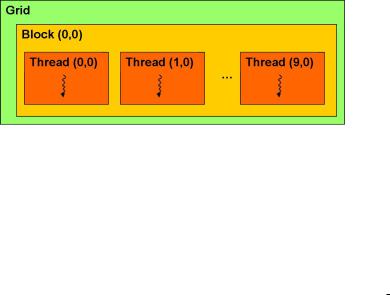
6 }
7
8 int main ( void ) {
9...
10 |
dim3 |
Block (10 , 1) ; |
|
11 |
dim3 |
Grid (1) |
; |
12 |
square_array |
<<< Grid , Block >>> (arr , 10) ; |
|
13...
14}
Figure 2.12: A 1-dimensional 10 x 1 block
The code in the kernel identi es a thread by using the blockIdx.x, blockDim.x and threadIdx.x. In this case, blockIdx.x = 0, blockDim.x = 10 and threadIdx.x ranges from 0,9 inclusive depending on which thread executes the kernel. Figure 2.13 is the result of executing kernel square array. Each thread is responsible for computing the square of the value stored in the array at index equal to the thread id. It is easily seen that each thread can operate independently of each other. Mapping thread Ids to array indices is a common practice in parallel processing. A similar technique is used in mapping to matrices and elds.
20
